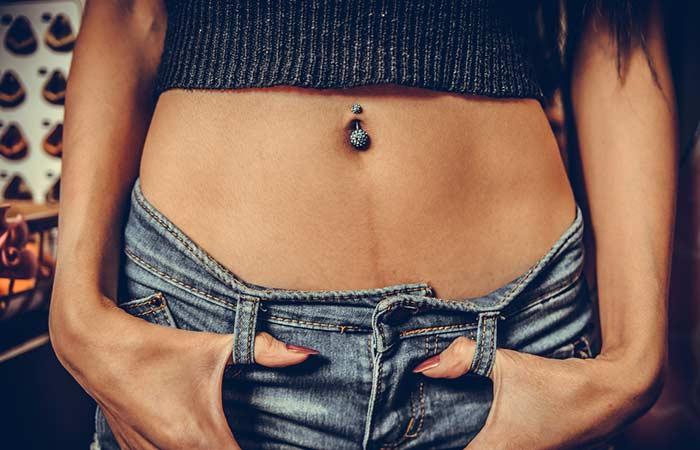Everyone has a belly button, no matter the procedure of delivery adopted. A belly button stands for the area where your umbilical cord had been attached while you still sat cosily in your mommy’s tummy, says Christopher S. Baird, PhD, Physics researcher and professor at the Texas A&M University (1).
While a baby is in the womb, the umbilical cord is attached on one end to the navel of the baby and on the other end, it attaches to the placenta of the mother. The umbilical cord is nothing, but a mass of blood vessels and it serves as the source of nutrition for the baby via the mother. When the baby is born, this channel becomes a mere vestige and, hence, the doctor cuts the chord. All that remains at the end of it is your ‘belly button.’
Most belly buttons at the beginning are protruding outwards (known as outies). But by and large, they gradually go in and are, hence, called ‘innies.’ A popular myth that hovers around belly button orientations is that it’s the way your umbilical cord was cut at the time of the birth that actually influences whether you’ll be an innie or an outie. But Dr. Trey Eubanks, MD, chief of surgery and medical director of Trauma Services at Le Bonheur Children’s Hospital, rubbishes these rumours as he explains the science behind an innie and outie.
What Does An Outie Belly Button Mean?
An outie belly button is nothing but a belly button that protrudes rather than being in. Only a small percentage of people have them protruding, but please don’t give them those stares when you find their belly button to be different as it is an absolutely normal thing. According to Dr. Eubanks, some people (about 10%) are left with outies and this can be because of two reasons: One could be because the newborn had an umbilical hernia or was afflicted with a little amount of infection at the base of the chord that might have been overlooked (2). This may lead to the formation of an abnormal or unusual tissue in the navel area, which is medically termed as ‘granulation tissue.’ Eventually, this ends up looking like a knot or a lump of skin sticking out. There is a high chance of a child born with an outie having an innie by the time he or she turns five. But beyond the age of five, it is very difficult for an outie to transform into an innie.
What Does An Innie Belly Button Mean?
An innie belly button is the belly button that we see most people having. It isn’t protruding out; instead, it is inside and that is why we call it an innie. An innie belly button is the sign of an umbilical cord that had no traces of a hernia when it was cut at the time of the baby’s birth. It also means that the umbilical chord was healthy and devoid of any infections when the child was born. Although an innie traditionally indicates a healthy umbilical cord (which is history after a child is born), an outie isn’t a sign of ill health once the baby is born and the cord is cut. There are no health implications of an innie and an outie.
Since an outie cannot be changed to an innie beyond a certain age, many people opt for surgery to transform it. People with an innie go for piercings and tattoos around and on the navel for it to look attractive. The bottom line is, it is very difficult for people to accept themselves the way they are, but people with both innies and outies are in a constant race to upgrade their navel area.
While, yes, innie belly buttons are much more prevalent in society, the fact remains – something that is common is not always the only normal that exists around us, is it? Experts say that there are no health-related complications that can be attributed to outie belly buttons and, certainly, the surgeons who cut your baby’s chord cannot be held responsible as this is not their fault. Belly buttons are cute no matter how they are, and they carry a sweet little yet priceless memory of us being attached, nurtured, and taken care of by our mothers, way before we landed on this planet!
In short, it is something that shouldn’t be an object of embarrassment for someone, nor should it be a matter to tease someone about. Whenever you feel sorry about the way it is or, alternatively, if you feel awkward staring at someone’s belly button (which you find not-so-good-looking), just remind yourself of the beauty and sanctity of that spot on your body and then let all the negativity simply vanish into thin air!
The post Are You An Innie Or An Outie Belly Button? Here’s What It Means! appeared first on STYLECRAZE.
from STYLECRAZE https://ift.tt/2HLui7N



No comments:
Post a Comment